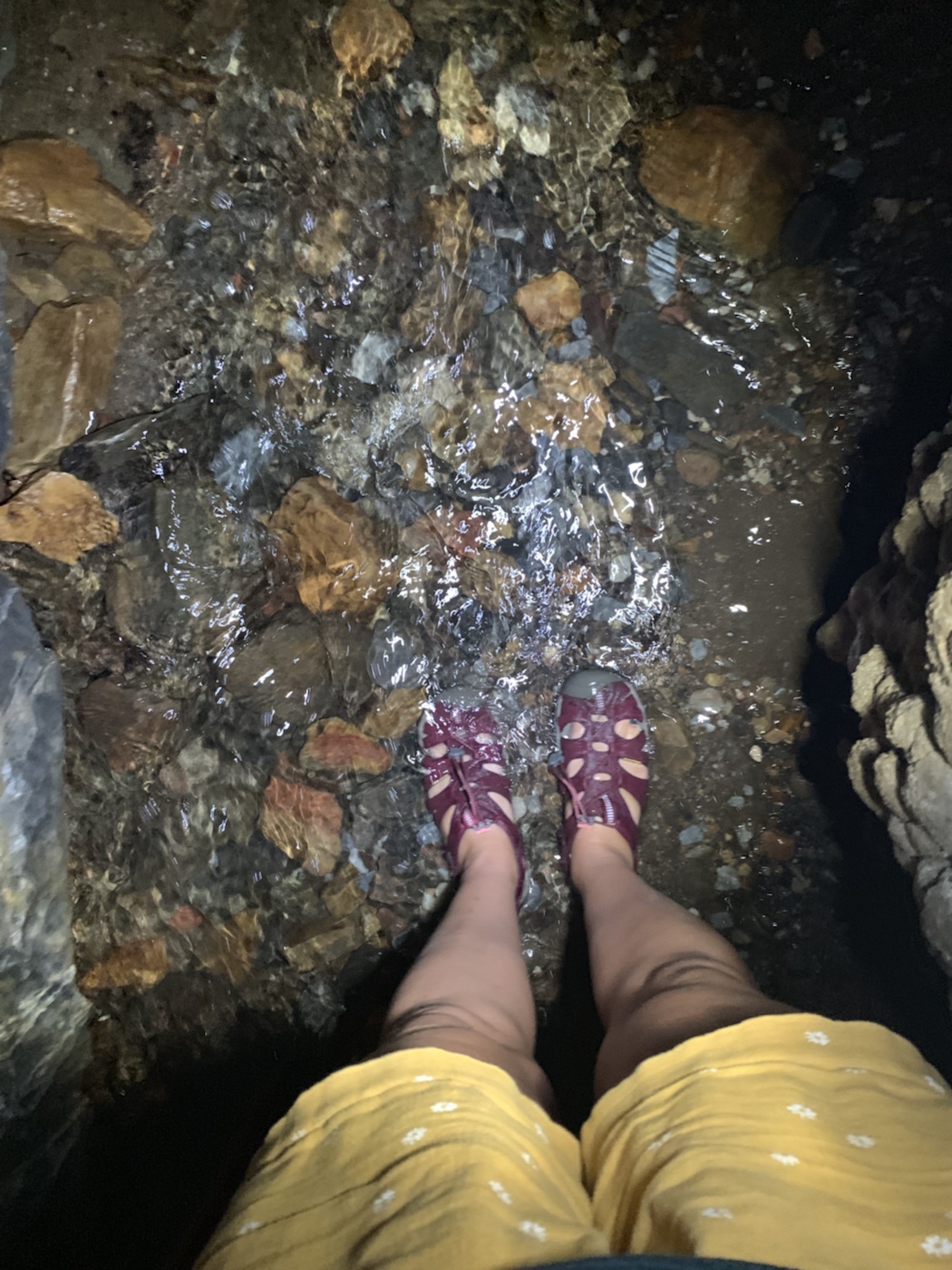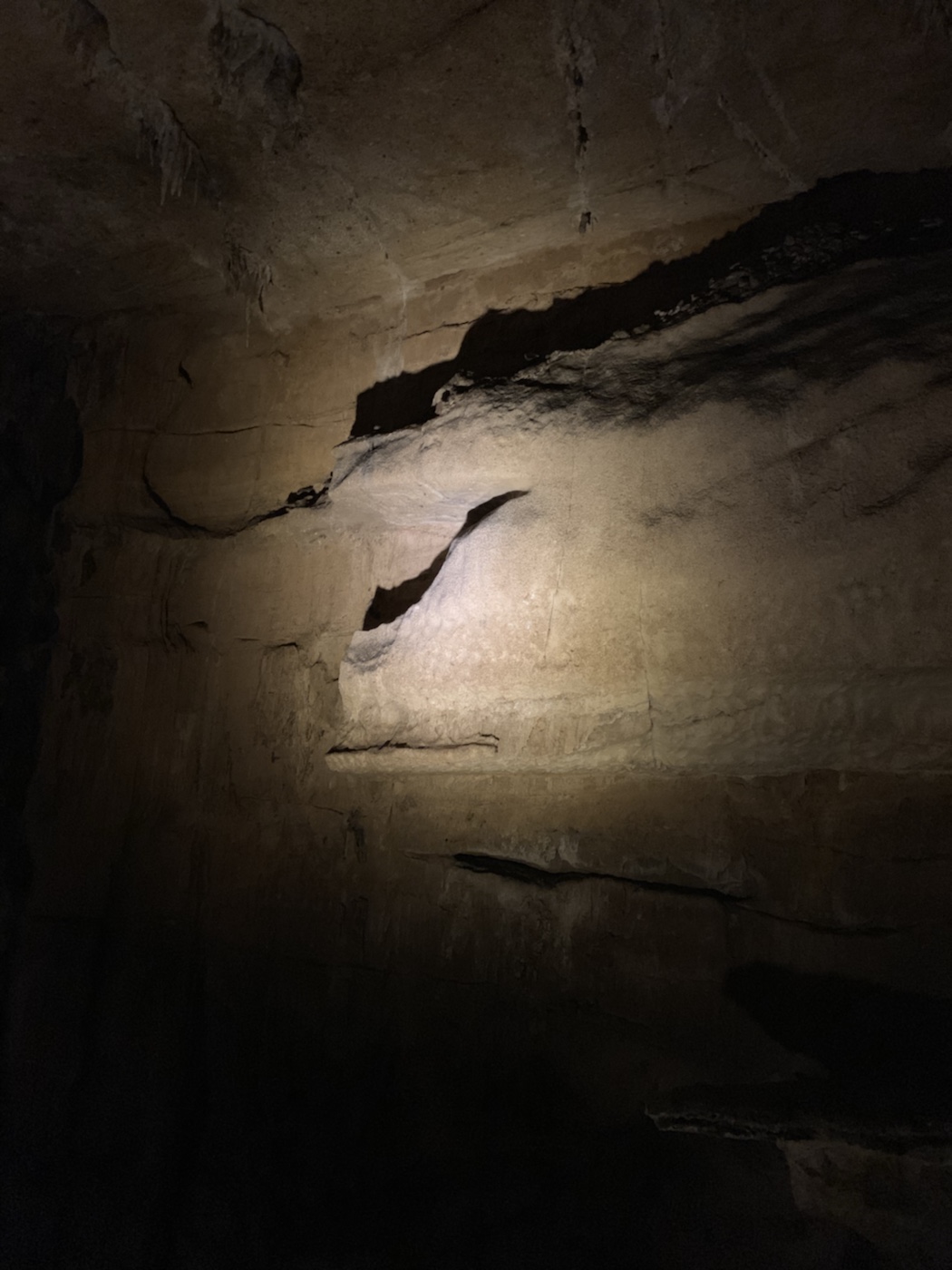
Kings Canyon and Sequoia are two great little national parks connected by the General’s Highway that contain some of the largest trees in the world by volume. They were both full of surprises though instead of just trees and we had a great 3 nights spent in Three Rivers, CA exploring both of them.
Three Rivers is a gorgeous little town along the Kaweah River and reservoir and it was beautiful to drive along it’s banks when we arrived with the hills aglow in the golden sunset light. They also have great gift shops and a quaint little coffee shop with excellent warm griddle donuts.



The evening when we arrived at our RV park, we walked down to the river that had a little rocked-in swimming hole and 2 guys from the area were down there doing belly flops. They offered us a beer and visited with us about the best things to do in the area. Friendly folks.
The following day we made the trek up to the Kings’s Canyon entrance with the RV which took a bit longer than anticipated because of the curvy narrow mountain road. We stopped at the visitor center in Grant Grove Village and a friendly ranger told us the highlights of the park if we drove down the King’s Canyon Scenic Byway.

We made our way to the General Grant Tree Trail that that led us to the General Grant Tree which, according to the trail guide, is the 3rd largest tree by volume in the world. Calvin Coolidge, president in 1926, designated it as the nation’s Christmas tree. It was a pretty impressive tree and so were all the surrounding sequoias named after states.






Here’s my husband by the Iowa Tree.

We also came across and walked through the “Fallen Monarch” tree that was used as a house by a couple brothers building a cabin in the area and reportedly also used as a hotel, saloon, and even stables for 30+ horses of the cavalry! Impressive to say the least.



It was also really cool to see the different ages of sequoia. The 100-year-old ones planted by folks at the beginning of the century looked like different trees as they were not as red and still had their lower branches. It was also interesting to learn that the small seeds of a sequoia are only released when they are heated by fire. This is an amazing design as older sequoias are largely resistant to fire with their thick layer of sapwood rich with tannin that protects them.

Back in the RV we went to drive down into the canyon with fantastic overlooks along the way.



We eventually came across a sign for Boyden Cave which was in the Sequoia National Forrest area. We parked and walked into the gift shop to learn that they gave cave tours every hour so we signed up for the next one and waited by the beautiful King’s River for it to start. It was one of the most fun things we did all day and my favorite cave tour to date. Our guide, Ely, was super enthusiast as he scurried over the marble pointing out interesting formations. I have only been in limestone caves in the past so it was neat to see the shimmering marble.




The pancake room:



We eventually made it to the end and were given the option to take the “wild” exit following the running creek out of the cave wading though very cold sometimes calf-deep water and often turning sideways to fit through the narrow slots. Our guide gave us an extra flashlight and we were sent on our own to find the exit. It was super fun!





It was a decent little climb to get up to the cave but the views were gorgeous of the canyon and the river below:

Back in the RV, we drove to the end of the King’s Canyon Scenic Byway to Zumwalt Meadow but not before we stopped at 2 great falls to see the power of King’s River, Grizzly Falls and Roaring River Falls.




We finally made it to the meadows and then turned around to climb back out of the canyon and back to Three Rivers. We stopped once at Knapp’s Cabin which was a storage shed built in 1925 when George Knapp, founder of Union Carbide, would camp out there. It was a beautiful setting.


This park was not busy at all and was a nice break from the crowds at Yosemite. I didn’t have to pull over our rig very many times as we slowly climbed out. We stopped at a couple more overlooks as the Sierra Nevadas were so pretty as the sun went down.




We finally made it out of the canyon and decided to make one last stop and walk the sequoia graveyard along the Big Stump Trail by the visitor center just before leaving the park. We set out to find the Mark Twain Stump that was cut down in 1891 to be displayed at museums in New York and London. The irony was that as these trees were attempted to be harvested for lumber, they were so large and brittle that they just splintered when they fell so they were only made into matches and fence posts. These trees are hardy so the stumps are still well preserved. There were a few standing beauties along the trail as well. Another interesting fact I learned was that their roots only descend about 5 feet into the ground but can extend outwards of 100 feet.






As we wound down the mountain toward 3 Rivers we saw the most gorgeous sunset and stopped to take it in. It was a long day at King’s Canyon but I learned a lot and saw so much.

The next day we headed to Sequoia National Park after sleeping in a bit. We took our scooters this time since we were close to the Foothills Visitor Center. We got there around 11 am, in time to book a tour of Crystal Cave at noon. Apparently there are over 300 caves in this park.

We started out on Generals Highway which has the most hair-pin turns of all the national park roads we’ve been on so far. We climbed up the mountain since the sequoia grove only grow in this specific region between 5,000 and 7,000 feet. They need moist, not soggy, soil to flourish. It felt good to feel the temperature decrease dramatically as we reached the top. Since the speed limit was 25 mph, the scooters did just fine, though on a few of those turns I felt like I was going to fly off the mountain.
We made it to Crystal Cave in time for our tour and hiked the 1/2-mile to the entrance after sanitizing our shoes since white nose syndrome has devastated the bat population out east and they would like to prevent its spread to the west. It was another neat marble cave but our tour guide was boring and also let these naughty Chinese boys have her flashlight who were fighting over it and subsequently blinding me.



Cave dragon:

See the creepy face at the bottom?

We made it out alive though so I was grateful. After winding up the mountain a bit further, we stopped at and climbed the 400 steps up Moro Rock which gave an awesome perspective of the groves of massive sequoias and a beautiful view of the Sierra Nevada Mountains.






The visitor center was next on our list before we turned around and went back down the mountain. They had an informative video on black bears. Unfortunately we didn’t see any on our trip out here.
Mailing a postcard to my Grandma which we do at every park:

We of course had to stop at the Giant Forest area to check out the Giant Forrest Museum and hike the 1-mile Big Trees Trail to see the General Sherman Tree, which is the largest tree (by volume) in the world! It was quite impressive and definitely worth seeing. It is 103-feet in circumference at it’s base, enough to take up 3 lanes of traffic on a freeway. Soaring to 274-feet, it is estimated to be between 2,000-3,000 years old.




After seeing this pillar of the park, we made the long twisty stretch down the mountain and entered the hotter oven-like temps as we exited the park. We made it back in time to eat at a fantastic pizza joint in town and took a swim with Rocky by lantern-light in the river.
These 2 parks are fantastic and sorely overlooked (especially King’s Canyon) but I’m very glad they exist to preserve these beautiful and massive trees.
This tour of California’s 9 national parks is going by quicker than I thought. Next post will be about Pinnacles and Channel Islands! We just arrived at Joshua Tree and after Death Valley we’ll be in Arizona. Thanks for following along on this wild adventure!
